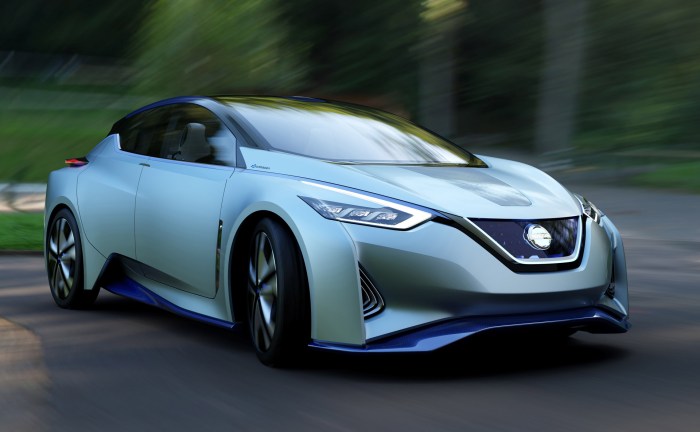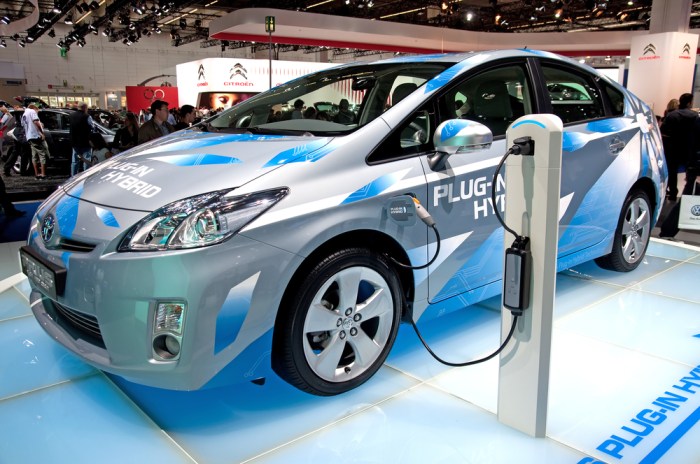Kicking off with electric vehicles, this topic is all about the future of transportation. From reducing emissions to the latest technology, we’re diving into the world of electric vehicles.
Overview of Electric Vehicles

Electric vehicles (EVs) are cars or vehicles powered by electricity stored in batteries. They are a sustainable alternative to traditional gasoline-powered vehicles, as they produce zero emissions and are more environmentally friendly.
Brief History of Electric Vehicles
Electric vehicles have been around since the 19th century, with the first electric car being developed in the 1830s by Scottish inventor Robert Anderson. However, it wasn’t until the late 20th and early 21st centuries that EVs gained popularity due to advancements in battery technology and a growing focus on reducing carbon emissions.
Benefits of Using Electric Vehicles
- Zero Emissions: Electric vehicles produce no tailpipe emissions, reducing air pollution and greenhouse gas emissions.
- Cost Savings: EVs have lower operating costs and maintenance costs compared to gasoline vehicles.
- Energy Efficiency: Electric motors are more efficient than internal combustion engines, leading to better energy utilization.
- Reduced Dependence on Fossil Fuels: By using electricity as a power source, EVs help reduce dependency on finite fossil fuels.
- Silent Operation: Electric vehicles are quieter than traditional vehicles, reducing noise pollution in urban areas.
Types of Electric Vehicles
Electric vehicles (EVs) come in various types, each offering unique features and benefits. Let’s delve into the different categories of electric vehicles available in the market.
Battery Electric Vehicles (BEVs) vs. Plug-In Hybrid Electric Vehicles (PHEVs)
Battery Electric Vehicles (BEVs) run solely on electricity stored in their batteries. They need to be plugged in to recharge and do not have an internal combustion engine. On the other hand, Plug-In Hybrid Electric Vehicles (PHEVs) have both an electric motor and a gasoline engine. PHEVs can run on electric power alone or switch to the gasoline engine when needed, offering flexibility to drivers.
Hybrid Electric Vehicles (HEVs) vs. Fuel Cell Electric Vehicles (FCEVs)
Hybrid Electric Vehicles (HEVs) combine an internal combustion engine with an electric motor. The battery in an HEV is charged through regenerative braking and the engine, unlike plug-in hybrids that require external charging. Fuel Cell Electric Vehicles (FCEVs), on the other hand, use hydrogen as fuel to generate electricity through a chemical process, emitting only water vapor as a byproduct.
Advancements in Electric Vehicle Technology
Electric vehicle technology has seen significant advancements in recent years, leading to improved performance, range, and charging infrastructure. Manufacturers are developing more efficient batteries, faster charging stations, and innovative designs to make electric vehicles more accessible and appealing to a wider audience.
Environmental Impact of Electric Vehicles

Electric vehicles (EVs) play a crucial role in reducing greenhouse gas emissions and improving air quality. The transition to electric vehicles has a significant impact on the environment.
Reducing Greenhouse Gas Emissions
Electric vehicles produce zero tailpipe emissions, which means they do not release harmful pollutants like carbon dioxide (CO2) and nitrogen oxides (NOx) into the atmosphere. By replacing internal combustion engine vehicles with EVs, we can significantly reduce the amount of greenhouse gases emitted into the air, helping to combat climate change.
Impact on Air Quality
The adoption of electric vehicles leads to cleaner air in urban areas. Since EVs do not emit pollutants while driving, they contribute to improving air quality by reducing the levels of harmful gases and particulate matter that can cause respiratory problems and other health issues.
Lifecycle Emissions Comparison
While EVs produce zero emissions during operation, it is essential to consider the lifecycle emissions, including the manufacturing and disposal processes. Studies have shown that electric vehicles have lower overall emissions compared to traditional vehicles, especially when powered by renewable energy sources. As the electricity grid becomes cleaner, the environmental benefits of electric vehicles continue to improve.
Charging Infrastructure for Electric Vehicles
Electric vehicles rely on a network of charging stations to power up their batteries. These stations come in different types and offer varying charging speeds to cater to the needs of EV owners.
Types of Charging Stations
- Level 1 Charging: This is the slowest type of charging, usually done using a standard household outlet. It is convenient for overnight charging at home.
- Level 2 Charging: These stations are faster than Level 1 and are commonly found in public places like shopping centers or parking lots. They can charge an EV in a few hours.
- DC Fast Charging: This type of charging is the fastest and is ideal for long-distance travel. DC fast chargers can provide an 80% charge in around 30 minutes.
Challenges and Opportunities in Developing Charging Infrastructure
- Challenges: One of the main challenges is the high cost of installing charging stations, especially fast chargers. Additionally, the lack of standardization in charging connectors and protocols can create confusion for users.
- Opportunities: Developing a robust charging infrastructure can open up new business opportunities for companies in the EV sector. It can also help reduce greenhouse gas emissions and reliance on fossil fuels.
Advancements in Fast-Charging Technology, Electric vehicles
- Improvements in Battery Technology: Advanced batteries can now handle higher charging rates without compromising their longevity.
- High-Power Charging Stations: Companies are investing in ultra-fast charging stations that can provide a full charge in under 15 minutes, making long trips more feasible for EV owners.
- Vehicle-to-Grid Technology: This innovation allows EVs to not only charge from the grid but also supply power back to it, creating a more sustainable energy ecosystem.